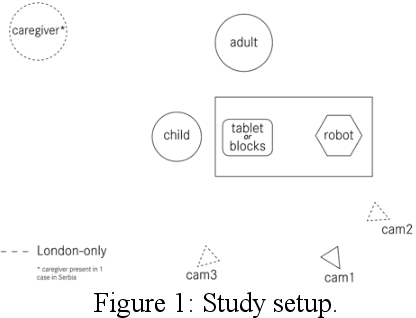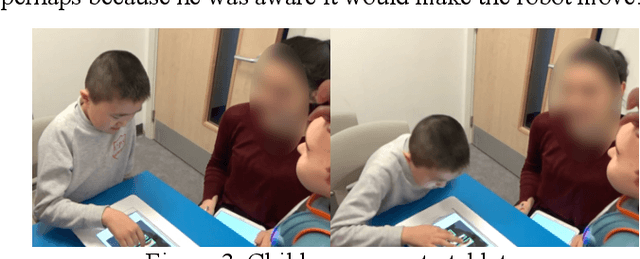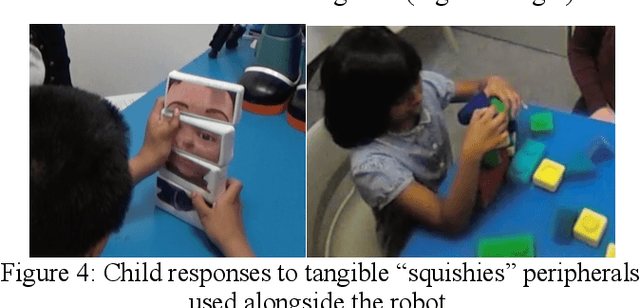Usability of a Robot's Realistic Facial Expressions and Peripherals in Autistic Children's Therapy
Paper and Code
Jul 23, 2020



Robot-assisted therapy is an emerging form of therapy for autistic children, although designing effective robot behaviors is a challenge for effective implementation of such therapy. A series of usability tests assessed trends in the effectiveness of modelling a robot's facial expressions on realistic facial expressions and of adding peripherals enabling child-led control of emotion learning activities with autistic children. Nineteen autistic children interacted with a small humanoid robot and an adult therapist in several emotion-learning activities that featured realistic facial expressions modelled on either a pre-existing database or live facial mirroring, and that used peripherals (tablets or tangible 'squishies') to enable child-led activities. Both types of realistic facial expressions by the robot were less effective than exaggerated expressions, with the mirroring being unintuitive for children. The tablet was usable but required more feedback and lower latency, while the tactile tangibles were engaging aids.
 Add to Chrome
Add to Chrome Add to Firefox
Add to Firefox Add to Edge
Add to Edge